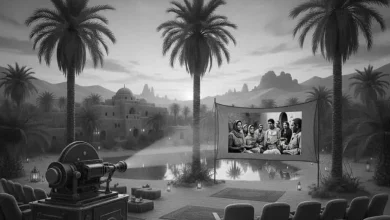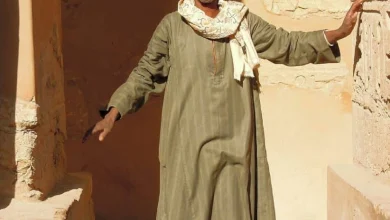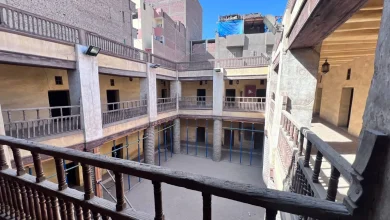
The Yousfi Mosque in Assiut: Four centuries of history ended under the bulldozers
In a narrow street amid historic shops in the Al-Ataba Al-Zarqa in western Assiut, the Yousfi Mosque stood tall. Perhaps not many people know its historical value as the second oldest mosque in Assiut after the Umayyad Mosque. Its history dates back nearly 400 years, yet its name was not included in lists of historical monuments, nor did it ever appear on tourist maps. Today, however, its granite pillars lie broken on the ground after being demolished in an incident whose true causes remain unclear.
The demolition of the mosque and the shock of the locals
The mosque was likely built about 400 years ago and is attributed to one of the princes of the Ottoman Empire in Asyut. It witnessed the stages of urban transformation in the old city. But a few days ago, the locals were surprised by the demolition of the mosque, which marked the disappearance of one of the most important heritage and historical landmarks in the city of Assiut.
The mosque was built in 1027 AH (approximately 1618 AD). Its construction is attributed to Yusuf Bey al-Qitas, one of the notables of that time, who is also credited with building another mosque of the same name in the city of Mallawi in the governorate of Minya.
The mosque was renovated during the reign of Khedive Tawfiq and is distinguished by its huge pink granite columns, which are said to have been brought from the remains of an ancient temple of Akhenaten. The mosque’s courtyard is approximately 9 meters wide and surrounded by umbrellas, the largest of which is the qibla umbrella.
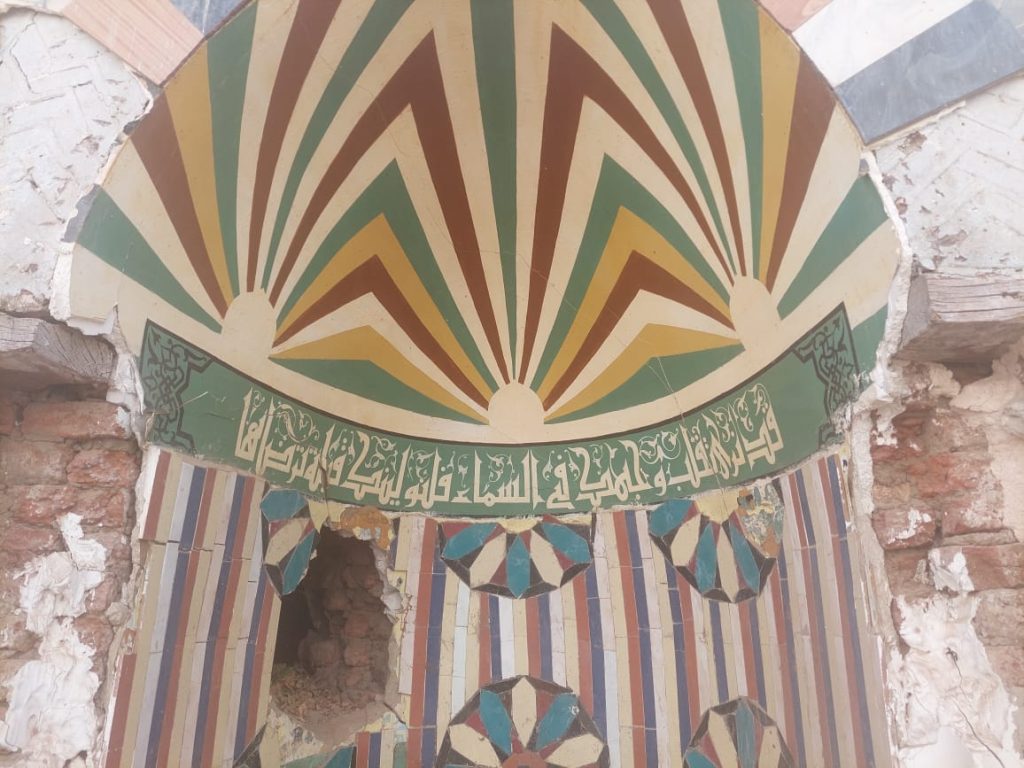
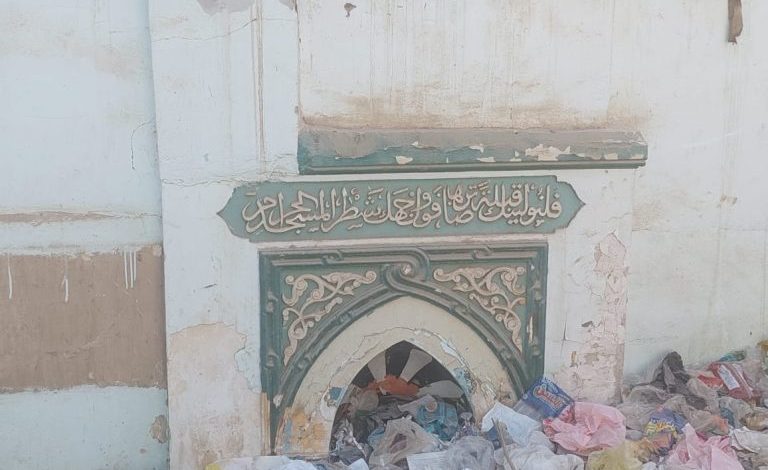
Unique history
The Al-Yousfi Mosque is one of the mosques that combines religious value with unique architectural and historical significance. Its history spans many decades, and it is considered a local heritage landmark in the heart of Asyut.
One of the residents living next to the mosque says: “The place is now a ruin inhabited by stray dogs, with piles of dirt and garbage piling up in its corners.” He continues: “The mosque used to bring people together, and it was in good condition. It could have stood for another 200 years or more. But they demolished it, and its history and our memories with it were lost for no apparent reason.”
Bulldozers erase history
Mohamed Abdel Salam, 70, one of the mosque’s regulars, says: “The mosque was very distinctive, its stones paved with pink granite columns. Its details tell a long history, and every corner of it tells a story. We had the most beautiful memories with it, and overnight it became a pile of dirt in front of us.”
He continues: “The mosque was built with stones brought from a Pharaonic temple, and this is not the first mosque or building in Upper Egypt to be built from the remains of Pharaonic temples. This was common in the past. The mosque was distinguished by an open courtyard surrounded by arcades, a long wall, and beautiful Islamic inscriptions.” He adds: “We were surprised when the bulldozers arrived and began demolition work relentlessly, knocking its pillars to the ground. The bulldozers showed no mercy for its rich history, and its rare inscriptions did not spare it.”
Contradictory statements from the Ministry of Religious Endowments
Years ago, prayers at the mosque were suspended by order of the Ministry of Religious Endowments with the intention of renovating it, but residents complained of attempts to seize it. Last August, the Directorate of Endowments in Assiut Governorate announced the formation of an expanded committee under the auspices of Sheikh Mohamed Abdel-Latif Mahmoud, director of da’wa and acting director of the directorate at the time. Chaired by Sheikh Nasser Mohamed Al-Sayed Ali, director of follow-up, the committee was tasked with taking immediate action to remove the encroachment on the mosque.
Sheikh Mohamed Abdullatif told the press at the time that the Directorate of Religious Endowments “will not allow any form of encroachment or tampering with the sanctity of the houses of God Almighty. They are not a place for personal greed or blatant encroachment.” However, just two months after this statement, demolition work began.


Ministerial decision to demolish it
Despite its historical and architectural value, the Al-Yousfi Mosque was not registered as an Islamic monument. This meant that it had no legal protection, facilitating its demolition without referral to the relevant authorities. In previous statements, the Antiquities Authority explained that it refused to register the mosque due to the lack of financial resources necessary for its renovation, not because of its lack of historical value.
Bab Masr contacted officials at the Antiquities Authority in Assiut, who denied that the mosque was under their jurisdiction, confirming that it belongs to the Ministry of Endowments. It added that the historic mosques registered on its lists are: the Great Mosque of Al-Kashif in the city of Manfalut, the Small Mosque of Al-Kashif in Al-Qisariya, the Umayyad Mosque in Assiut, and the Mujahideen Mosque in Mujahideen Square. As for the Al-Yousfi Mosque, a ministerial decision was issued to demolish it.
An official at the General Authority for Islamic, Coptic, and Jewish Antiquities, who declined to be named, confirmed that the Permanent Committee for Antiquities had refused to register the mosque four years ago, considering it “unworthy of registration.” Meanwhile, one archaeology expert believes that the Al-Yousfi Mosque deserved to be listed as an archaeological site, but what happened was that “Assiut lost a real piece of its history that will never return.”
Response from the Directorate of Endowments
In the Assiut Directorate of Endowments’ response to Bab Masr regarding the demolition, a source who declined to be named said: “The mosque is currently undergoing renovation and restoration. The directorate sent a letter to the Islamic and Coptic Antiquities Authority to confirm that it was not a historical site. The response was that it was not listed as a historical site, so it was demolished.”
The erosion of Assiut’s cultural identity
Dr. Ahmed Mustafa Ali, writer, storyteller, and development media officer for southern Assiut at the State Information Service, says: “Assiut is one of the governorates that has suffered most from the erasure of its cultural identity. Perhaps no other Egyptian governorate has faced what it has in this regard. Historic palaces, cinemas, and mosques are being demolished. We see one palace after another being demolished, and one cinema after another.”
He continues: “What is surprising is that this has been happening continuously for half a century, in locations that are clearly visible to passersby and in the heart of public squares in cities, towns, and villages. What is even stranger is that Assiut has branches of the Antiquities and Tourism Authorities and their police forces, as well as cultural elites and university professors, and yet its heritage landmarks are being erased before everyone’s eyes.”
Ali concludes by saying, “What happened to the Yousfi Mosque highlights the need to reassess buildings of historical value in the governorate and to document them in order to protect what remains of the city’s Islamic memory.”

